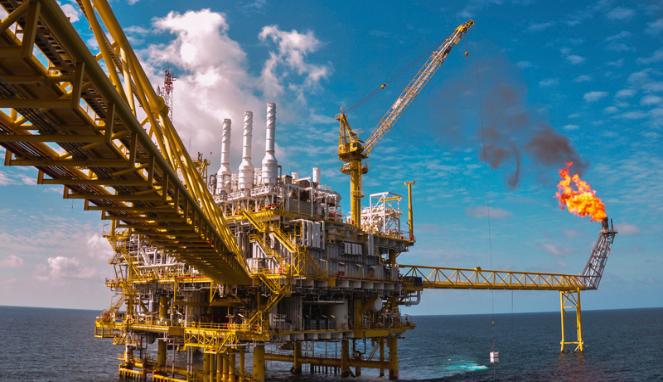
The petroleum industry includes global petroleum processing, from exploration, extraction, refining, transportation (usually through oil tankers and pipeline transport), and marketing of petroleum products. The largest product volume of this industry is fuel oil and gasoline. Petroleum is also a raw material of many chemical products such as drugs, solvents, fertilizers, pesticides, and plastics. This industry is usually divided into 3 main components: upstream, medium, and downstream. Medium operations are usually included in the downstream category.
Petroleum is vital for many industries and essential to the survival of industrial civilization, hence the important concern of many countries. Petroleum accounts for a large percentage of world energy consumption, ranging from low (32% in Asia and Europe) to high (53% in the Middle East.
The exploration process is a basic stage in the upstream oil and gas industry which consists of three parts, namely geological investigation and geophysical investigation and exploration drilling, the following explanation:
- Phase of Geological Investigation.
Is an activity that aims to know the types of rocks, chemical composition, the age of the rock structure of the soil layer and the potential of the region has oil and gas content. The main purpose of this process is to predict whether the region has natural resources in it.
- Geophysical Stage.
This process involves mapping the underground layers structures and looking for structural forms that may be oil and gas traps or often known as traps or prospects. This process is usually done by way of seismic surveys.
- Exploration drilling.
This stage is often also called drilling proof because basically this stage aims to prove whether a trap that has been believed in the previous stage really contains oil and natural gas. This process is done by drilling with a certain depth according to the mapping of underground structures.
Percentage consumption in other regions is South America and Central America 44%, Africa 41%, North America 40%. The world consumes 30 billion barrels (4.8 km³) of oil per year, with developed countries being the biggest consumers. The United States alone consumes 25% of world oil production in 2007. Petroleum production, distribution, refineries and sales are the world's largest industries when viewed from total revenue.
This stage is a series of second processes of upstream oil and gas industry activities to produce oil and gas from areas that have proven to contain resources within it. Exploitation consists of several parts, namely the drilling stage of development and the stage of provision of facilities and production stages, the following explanation:
- Drilling Development.
It is a process for making advanced wells according to standard operation and complete the desired production pattern.
- Provision of Facilities.
This stage is the process of providing various supporting infrastructure such as technology, types of equipment and oil and gas shelter.
- Production Stage.
After the provision of infrastructure has been in accordance with operating standards it will continue the production phase of the process of removal of oil and gas to the surface using the technology and tools that have been determined.
After the petroleum is above the surface then the basic purification process will be carried out with the aim of removing solid molecules and unwanted solutions. It will then be stored in the storage tank and ready to be shipped to the next processing unit.